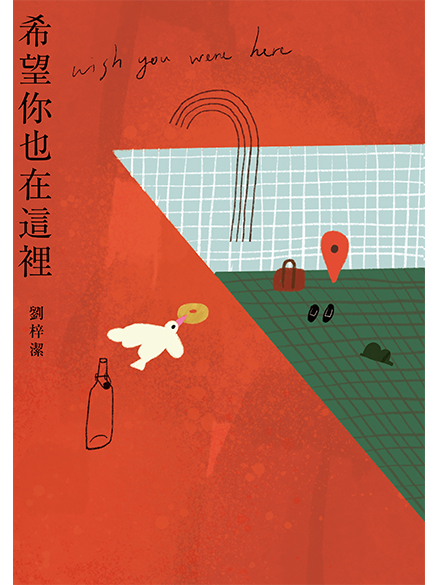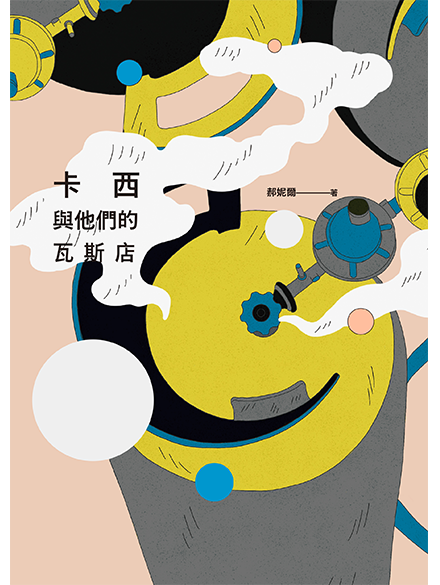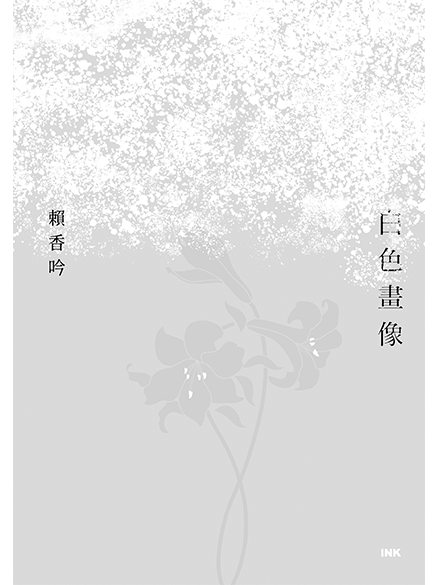Most Taiwanese readers know screenwriter Essay Liu from the 2010 film Seven Days in Heaven. Over the years, she has continued to write scripts, essays, and novels, bringing works that have captured people’s hearts and attention. But whether her subject is love, food, or life, her readers can often glimpse elements of travel and exotica in her writing; now, the avid traveler has finally decided to write a story about traveling.
Fiction Close to Life
Kyoto, Japan; Sichuan, Yunnan, and Tibet in China; Hualien, Changhua, Taichung, and Taipei in Taiwan. After reading Wish You Were Here, readers will have followed the protagonists on a full-circle tour of East Asia. When asked whether her writing was based on lived experience, Liu smiles and says, “I have to say that if I haven’t been to a place, I doubt I would be able to write about it.” As a novelist, she is well accustomed to turning life experiences into creative fuel, and this fuel often comes from travel.
In the opening chapter on sky burial, “Shmashana (Charnel ground)”, one can almost see the swooping vultures and smell the stench of corpses permeating the air through her words, which immerse the reader in intense and unsettling sensory information. The sky burial ground left a profound impression on Liu; she describes bodies on the burial ground left for anywhere between two to seven days, assaulting the nose with an odor stronger than any excrement or waste she had ever smelt. It was also the first time that she realized, “So this is what death smells like,” and decided to write this visceral experience into the book.
A New Kind of Travel Brings Unexpected Inspiration
When she first decided to write Wish You Were Here, Liu, who is used to basing her writing on personal experience, originally planned to revisit all the places in the book and write while traveling, integrating old memories with new discoveries. However, the disruptions of the 2020 pandemic forced her to forego her travel plans.
Staying in Taiwan to write, she turned to Google Maps for inspiration. She went online to the cities she had traveled to, and while using Street View and its timeline to browse what places looked like past and present, she suddenly wondered: “Could I be captured by Google cameras while walking on the street one day, and become a part of Street View?” Therefore, having done her “fieldwork” via Google Maps, she gave her protagonist Hsieh An-Te the ability to check Street View, which becomes a major clue in the journey to finding his mother in the narrative.
To Broaden Your Writing, You Have to Broaden Your Horizons
The travel-loving Liu loves stories about journeys, including classics like On the Road and Eat Pray Love. Although these “grand trip” stories ostensibly write about travel, their focus is ultimately the fundamental changes effected on the traveler’s state of mind through interaction with people, events, and objects on the road. This sense of transformation fascinates Liu, so when she thought she had enough travel and emotional experience to accomplish this type of work, Wish You Were Here was written.
But even though the focus is on self-pursuit, the biggest difference between Wish You Were Here and traditional travel and on-the-road works is that Liu spends more time dealing with the family experience of the characters. “I wanted to audaciously explore the idea of ‘don’t be restricted by your family’ in the story.” She says that dealing with family dynamics is the biggest issue for every character in the book, and only after letting go of their attachments and reconciling with their families can they truly embark on their own life journey.
A Journey on Paper Through the Eyes of the Traveler
As the interview nears the end, we discuss the work’s potential for international development. Liu mentions that themes of travel and self-discovery have no borders, and hopes that international readers can temporarily forget about the author’s nationality when reading the book, and travel around East Asia, like “Muggles”, through words on the page.
So which of the places in the book is the most worth visiting? Liu smiles, “If it was a place that you could visit again and again, I’d recommend Kyoto, but if we’re talking a place you have to visit at some point in your life, it’d definitely be Tibet!” Given its complicated entry process and the dangers of traveling at high altitude, Tibet particularly tests people’s physical condition – it’s a place you “may not be able to go to even if you wanted”. Before tourism in East Asia revives, and you can pay a visit to Kyoto or Tibet, why not first read Wish You Were Here and embark on a journey of self-discovery with the characters!



